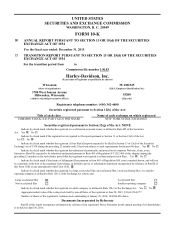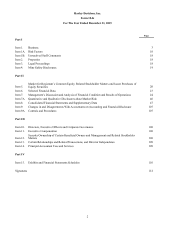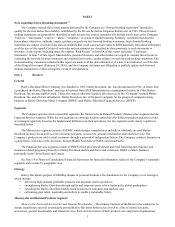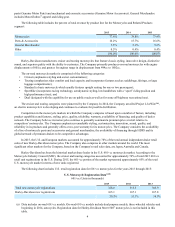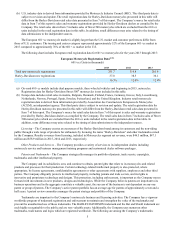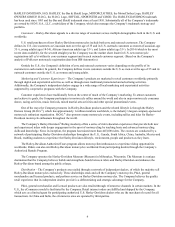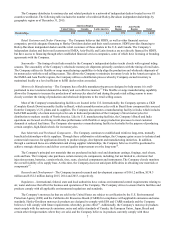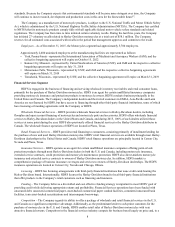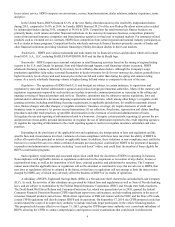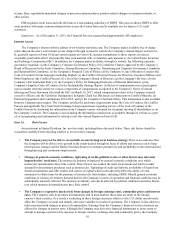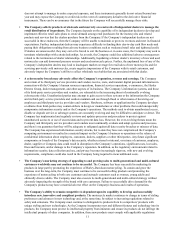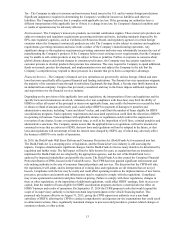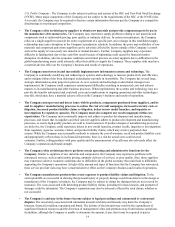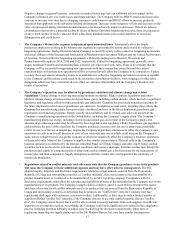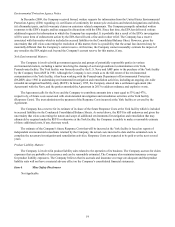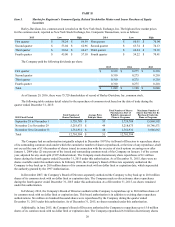Harley Davidson 2015 Annual Report Download - page 10
Download and view the complete annual report
Please find page 10 of the 2015 Harley Davidson annual report below. You can navigate through the pages in the report by either clicking on the pages listed below, or by using the keyword search tool below to find specific information within the annual report.10
actions, fines, regulatorily-mandated changes to processes and procedures, product-related changes or consumer refunds, or
other actions.
ESB originates retail loans and sells the loans to a non-banking subsidiary of HDFS. This process allows HDFS to offer
retail products with many common characteristics across the United States and to similarly service loans to U.S. retail
customers.
Employees – As of December 31, 2015, the Financial Services segment had approximately 600 employees.
Internet Access
The Company’s internet website address is www.harley-davidson.com. The Company makes available free of charge
(other than an investor’s own internet access charges) through its internet website the Company’s Annual Report on Form 10-
K, quarterly reports on Form 10-Q and current reports on Form 8-K, and any amendments to those reports, as soon as
reasonably practicable after it electronically files such material with, or furnishes such material to, the United States Securities
and Exchange Commission (SEC). In addition, the Company makes available, through its website, the following corporate
governance materials: (a) the Company’s Corporate Governance Policy; (b) Committee Charters approved by the Company’s
Board of Directors for the Audit Committee, Human Resources Committee, Nominating and Corporate Governance Committee
and Sustainability Committee; (c) the Company’s Financial Code of Ethics; (d) the Company’s Code of Business Conduct (the
Code of Conduct) in nine languages including English; (e) the Conflict of Interest Process for Directors, Executive Officers and
Other Employees (the Conflict Process); (f) a list of the Company’s Board of Directors; (g) the Company’s By-laws; (h) the
Company’s Environmental Policy; (i) the Company’s Policy for Managing Disclosure of Material Information; (j) the
Company’s Supplier Code of Conduct; (k) the Sustainability Strategy Report; (l) the list of compensation survey participants
used as market reference points for various components of compensation as reported in the Company’s Notice of Annual
Meeting and Proxy Statement filed with the SEC on March 16, 2015, which compensation relates to the Company’s named
executive officers; (m) the California Transparency in Supply Chain Act Disclosure; (n) Statement on Conflict Minerals; (o)
Political Engagement and Contributions 2014-2015; and (p) the Company's Clawback Policy. This information is also available
from the Company upon request. The Company satisfies the disclosure requirements under the Code of Conduct, the Conflict
Process and applicable New York Stock Exchange listing requirements regarding waivers of the Code of Conduct or the
Conflict Process by disclosing the information in the Company’s proxy statement for its annual meeting of shareholders or on
the Company’s website. The Company is not including the information contained on or available through its website as a part
of, or incorporating such information by reference into, this Annual Report on Form 10-K.
Item 1A. Risk Factors
An investment in Harley-Davidson, Inc. involves risks, including those discussed below. These risk factors should be
considered carefully before deciding whether to invest in the Company.
• The Company may not be able to successfully execute its long-term business strategy. There is no assurance that
the Company will be able to drive growth to the extent desired through its focus of efforts and resources on its long-
term business strategy and the Harley-Davidson brand or to enhance productivity and profitability to the extent desired
through pricing and continuous improvement.
• Changes in general economic conditions, tightening of credit, political events or other factors may adversely
impact dealers’ retail sales. The motorcycle industry is impacted by general economic conditions over which
motorcycle manufacturers have little control. These factors can weaken the retail environment and lead to weaker
demand for discretionary purchases such as motorcycles. Tightening of credit can limit the availability of funds from
financial institutions and other lenders and sources of capital which could adversely affect the ability of retail
consumers to obtain loans for the purchase of motorcycles from lenders, including HDFS. Should general economic
conditions or motorcycle industry demand decline, the Company’s results of operations and financial condition may be
substantially adversely affected. The motorcycle industry can also be affected by political conditions and other factors
over which motorcycle manufacturers have little control.
• The Company is exposed to market risk from changes in foreign exchange rates, commodity prices and interest
rates. The Company sells its products internationally and in most markets those sales are made in the foreign
country’s local currency. As a result, a weakening in those foreign currencies relative to the U.S. dollar can adversely
affect the Company's revenue and margin, and cause volatility in results of operations. The Company is also subject to
risks associated with changes in prices of commodities. Earnings from the Company’s financial services business are
affected by changes in interest rates. Although the Company uses derivative financial instruments to some extent to
attempt to manage a portion of its exposure to foreign currency exchange rates and commodity prices, the Company

